Last chance: The 14th Architizer A+Awards celebrates architecture's new era of craft. Apply for publication online and in print by submitting your projects before the Final Entry Deadline on January 30th!
The recently completed Lewis Arts Complex, located on the Princeton University campus, is a symphonic masterpiece by Steven Holl Architects. The project comprises three buildings organized around a spacious public courtyard. The tripartite program — music, theater and dance — is united by the Forum, a multipurpose gathering and performance space, sunken beneath the courtyard.
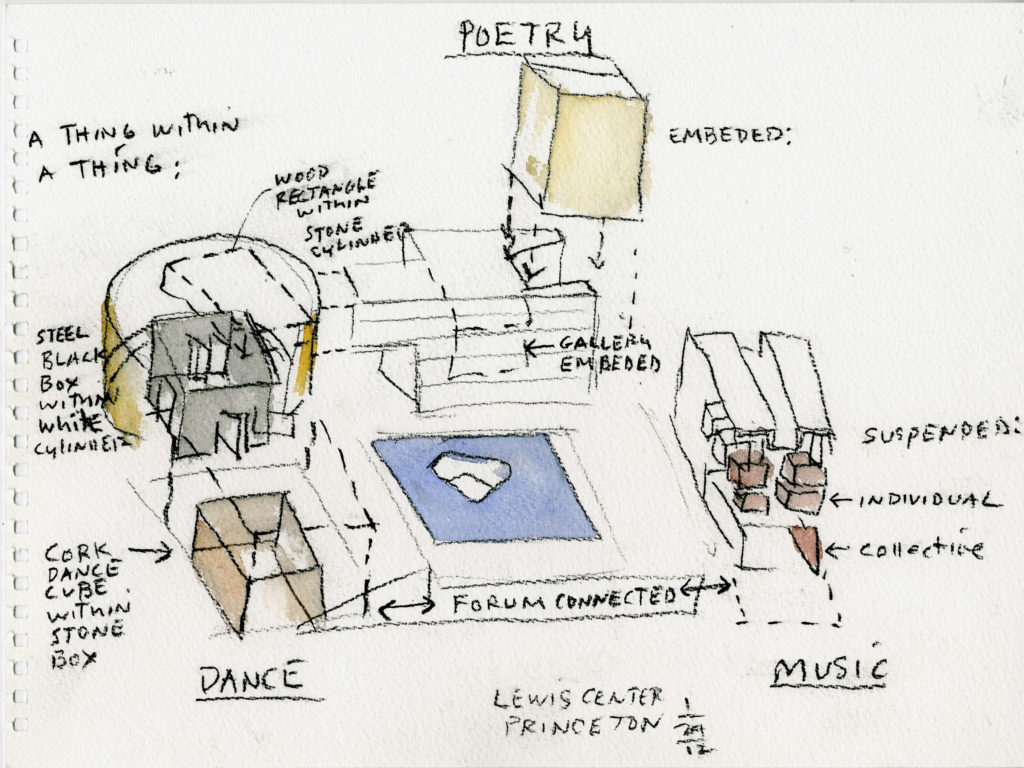
Image via Steven Holl Architects.
As illustrated in the concept sketch above, the design is based on a musical approach to architecture, a desire to create harmony between discordant materials. The architects, like the conductors of an orchestra, collaborated with designers, manufacturers and craftsmen to customize every space within this performing arts complex. So, as you decide what products to specify in your next project, be inspired by these beautiful, bespoke finishes:
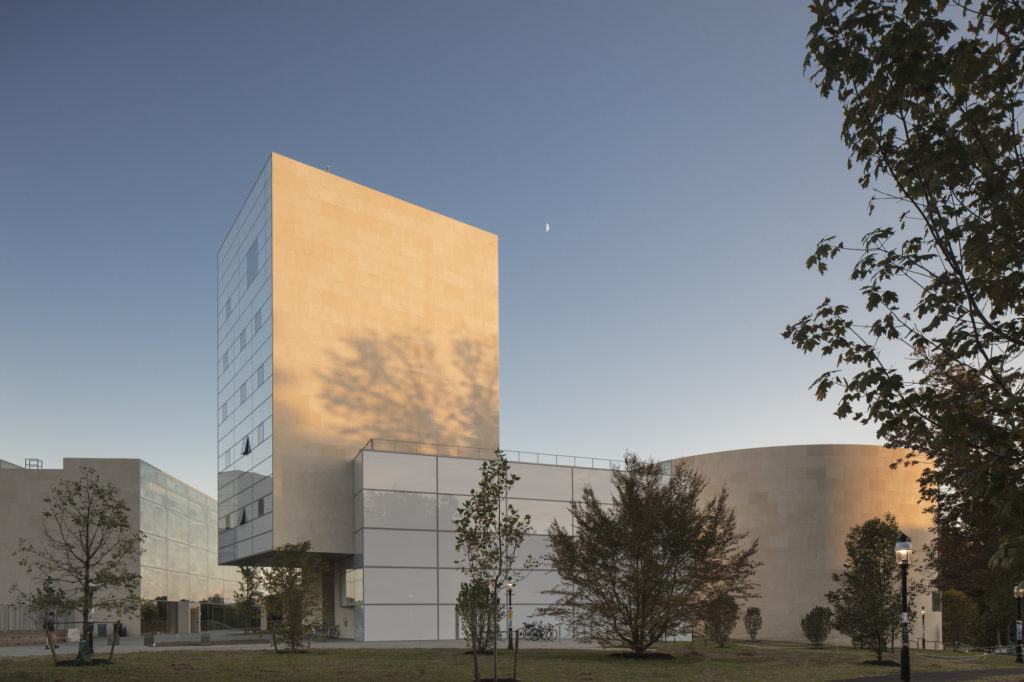
Photo by Paul Warchol.
Limestone Cladding
Manufactured by Pimar
The outward-facing façades are solid and monumental. They are clad in Lecce, an ancient limestone known for its light beige color and remarkable workability. The stone derives its name from the Lecce region of Italy, where the cladding was quarried and fabricated by local masons.
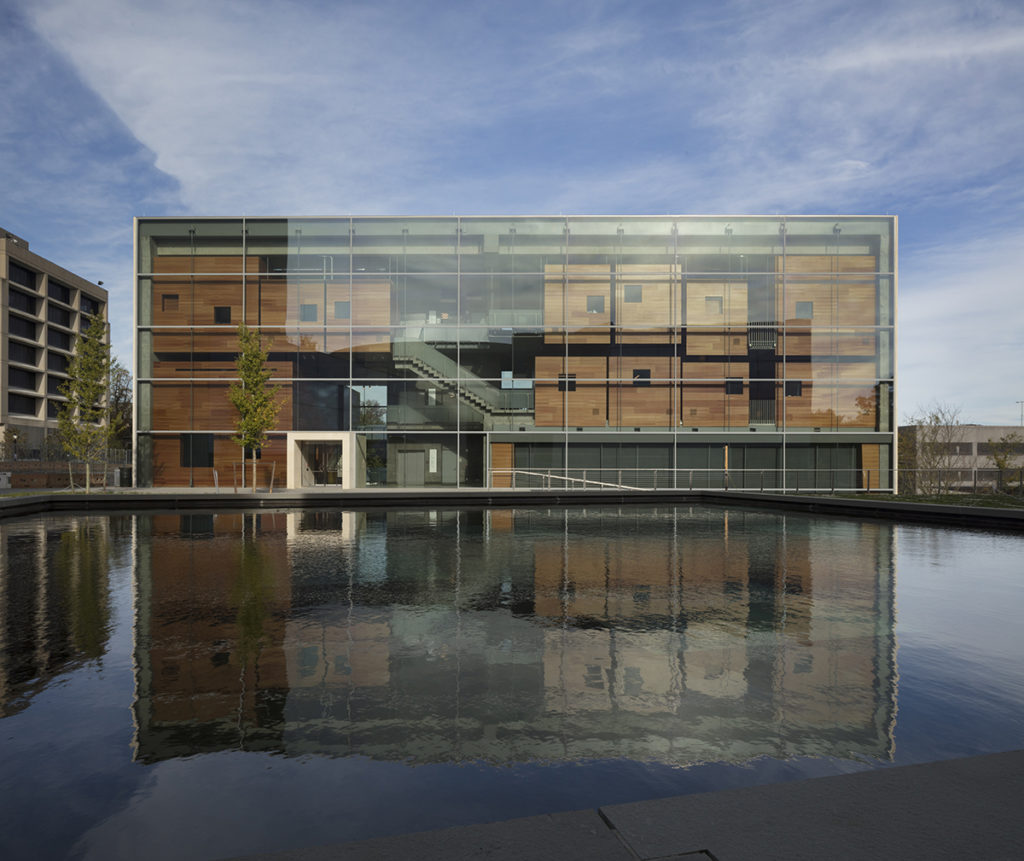
Photo by Paul Warchol.
Curtain Wall Façade
Manufactured by Gartner
The inward-facing façades appear more delicate, featuring large expanses of clear and acid-etched glazing. While most of the glass is framed by shot-blasted steel mullions, the curtain wall of the Music Building is supported by slender steel cables which permit uninterrupted views of its interior.

Photo by Paul Warchol.
Interior Millwork
Manufactured by Eastern Millwork Inc.
Inside the Music Building, rehearsal rooms are held apart from the main structure by steel rods in order to maximize acoustic isolation. Like musical instruments, these suspended volumes are clad in richly stained Cherrywood veneers, milled by local craftsmen.
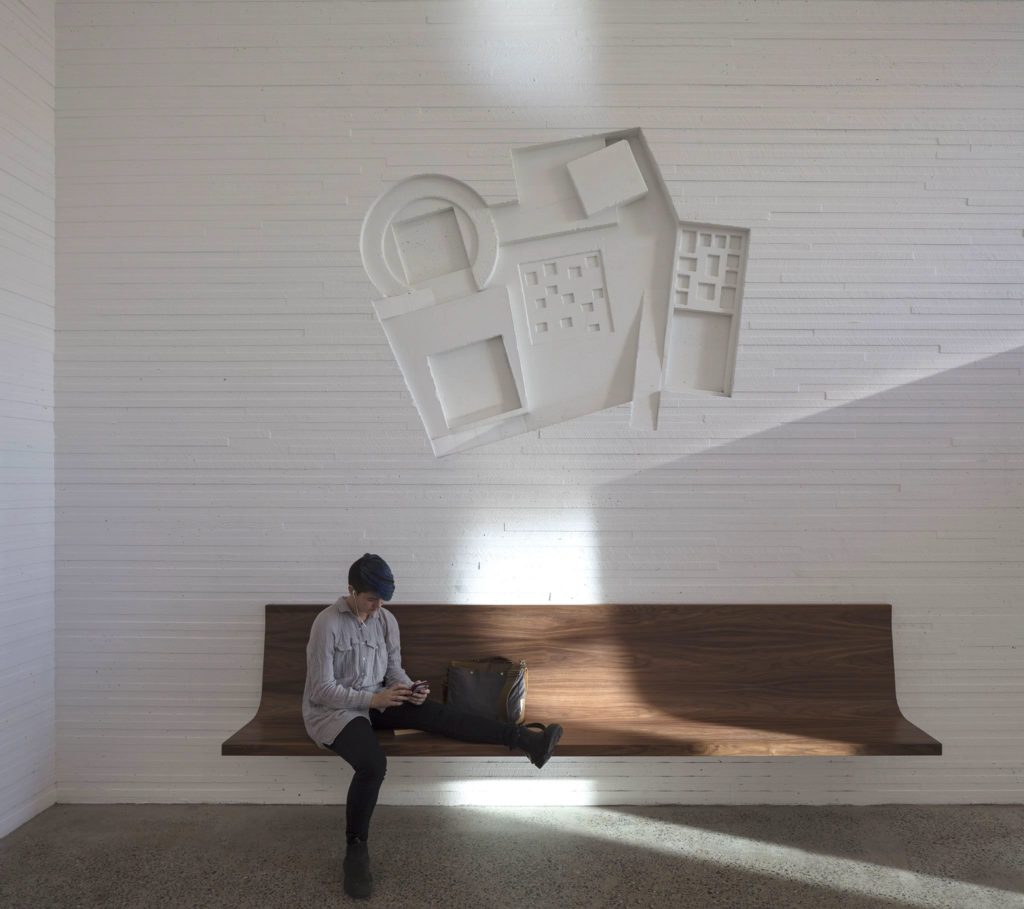
Photo by Paul Warchol.
Cast-in-Place Concrete
Manufactured by Villa
The walls of the public spaces are finished in textural, board-formed concrete which is painted white to emphasize the play of light and shadow on its surface. In the main lobby, a three-dimensional plan of the complex has been imprinted into the concrete, creating an abstract sculptural relief.
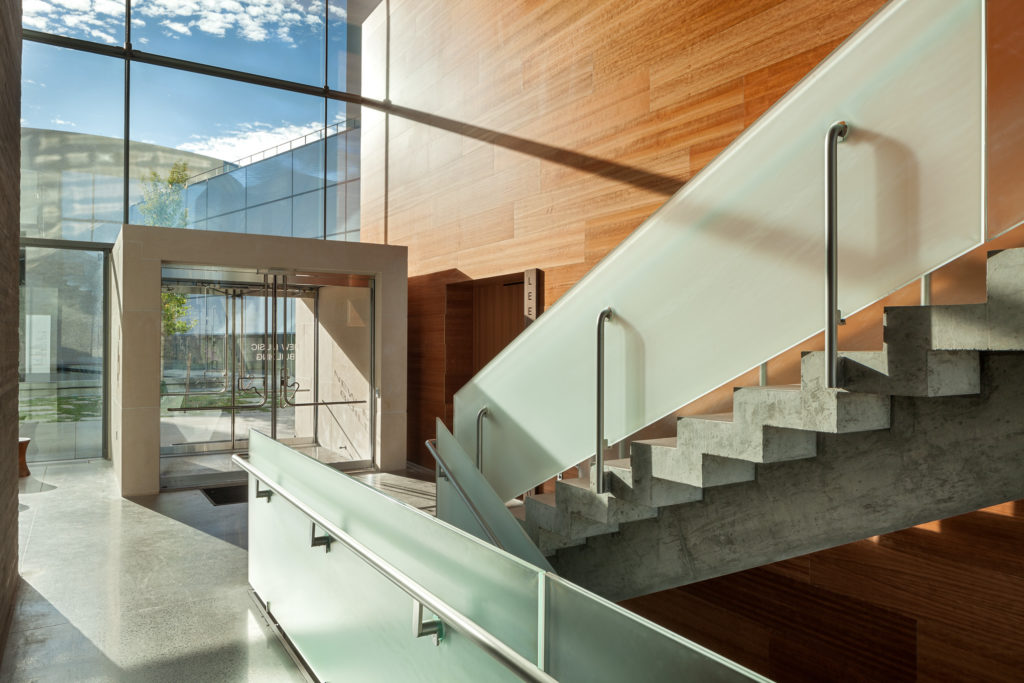
Photo by Mike Van Tassell.
Interior Glass
Manufactured by Josloff Glass Co.
The architect’s use of acid-etched glass is continued on the interior of the building in the form of acoustic glass partitions and railings. These translucent sheets of glass, supported by bead-blasted steel stanchions, appear to float above the raw concrete floors.
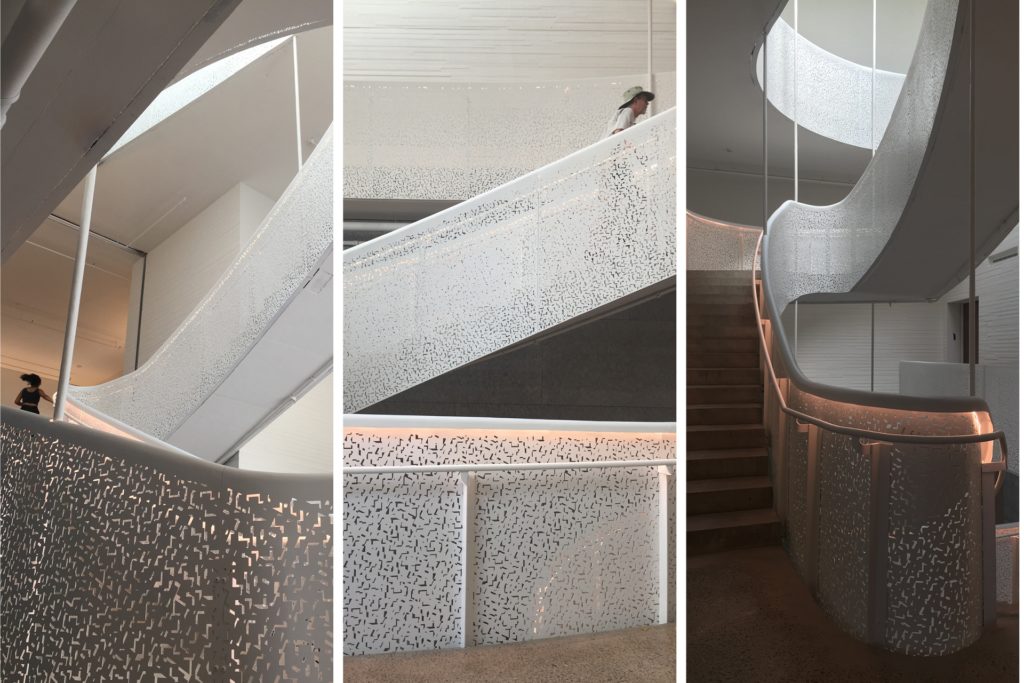
Photos by BNIM Architects.
Custom Stair Railings
Manufactured by Crystal Steel
Although the complex contains many elegantly-detailed stairs, the most dynamic is the “dancing staircase” in the Wallace Dance Building and Theater. Its perforated metal railing was designed by Steven Holl, who was inspired by labanotation symbols, which are often used by choreographers to compose dance routines.
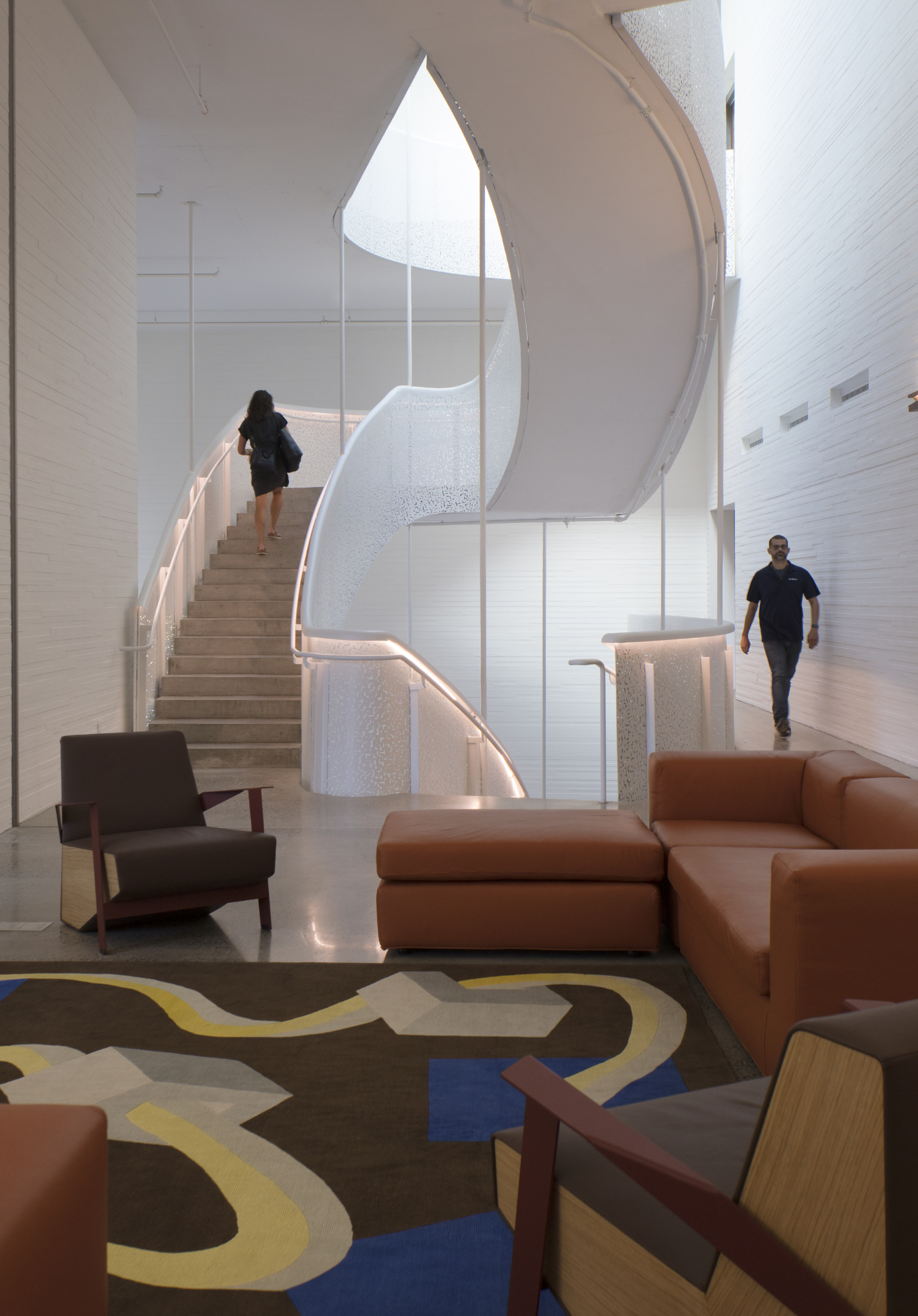
Photo by Paul Warchol.
Contract Furniture
Manufactured by Arflex, Cappellini, CC-Tapis, Moroso and Wittmann
To encourage collaboration among fellow students and faculty members, there are informal sitting areas scattered throughout the project. Each features chairs and sofas by renowned furniture designers, as well as custom area rugs based on Steven Holl’s own watercolors.
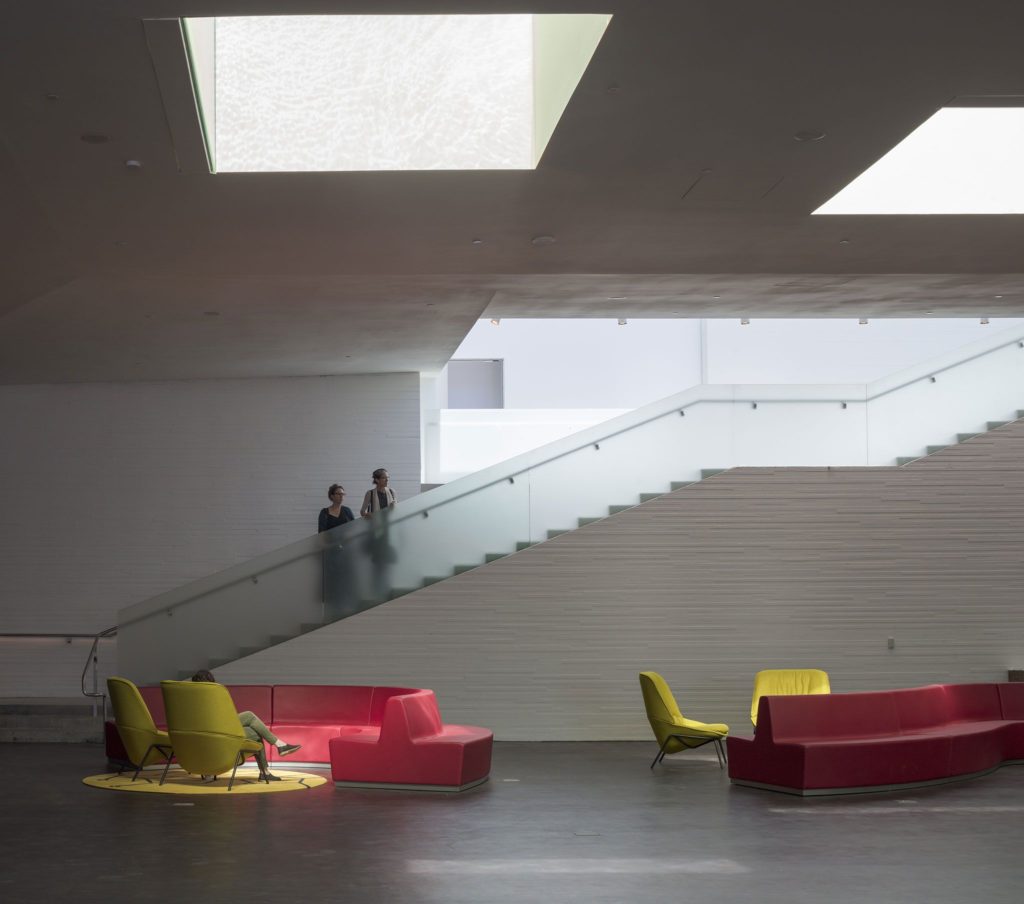
Photo by Paul Warchol.
Skylights
Manufactured by Gartner
The Forum, which is partially embedded in the ground, is illuminated by a series of deeply recessed skylights. These are submerged in the reflecting pool above, allowing natural light to filter into the space and shimmer onto surfaces below.
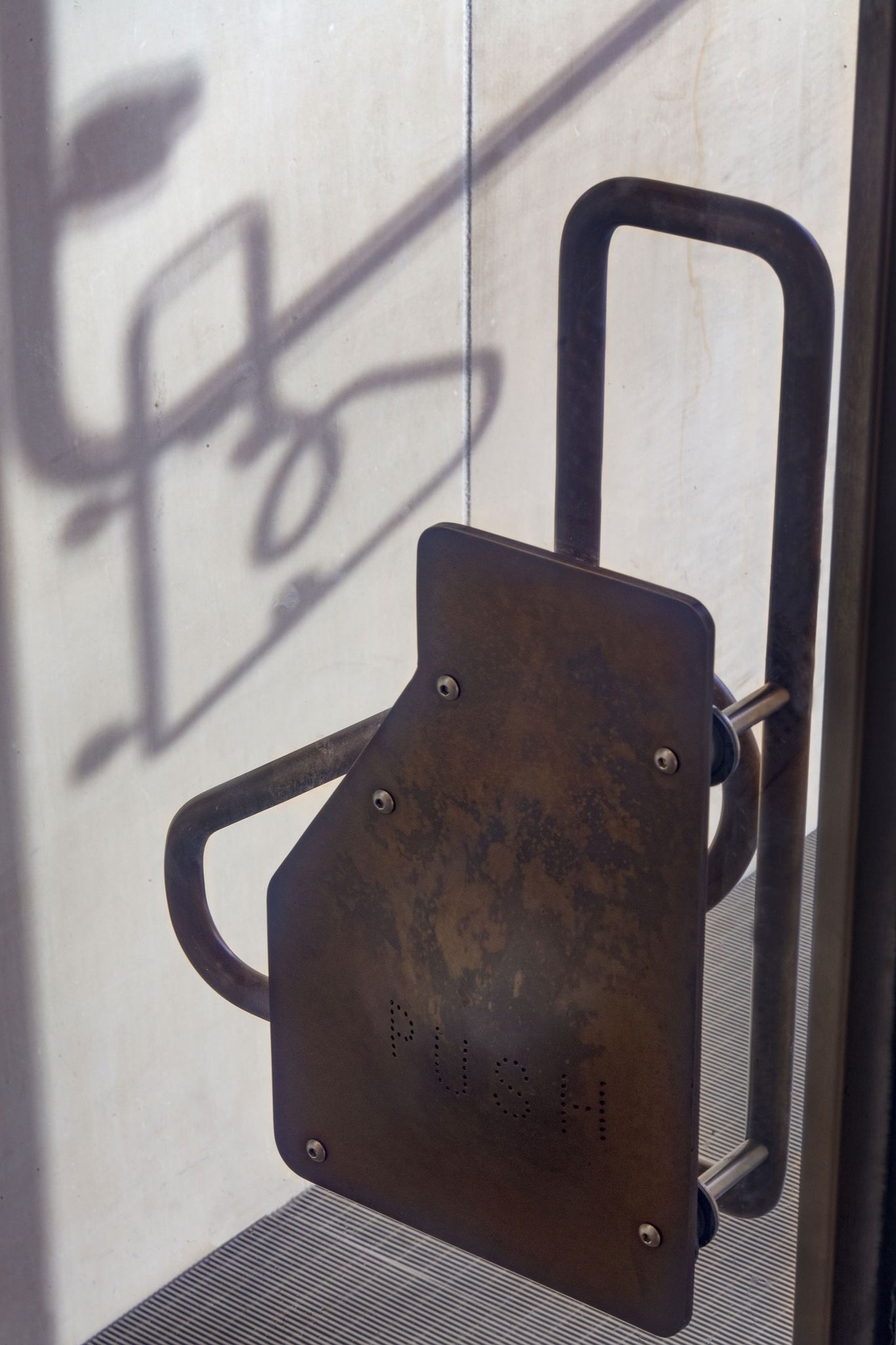
Photo via Afasia Archizine.
Door Hardware
Manufactured by Firedance Studio
At the main entrances, visitors are greeted by weathered steel door handles, designed by Steven Holl and built by Firedance Studio. These twisted, metal sculptures form pull handles on the exterior and are connected to flat plates — with the word “PUSH” drilled into them — on the interior.

Photo via Afasia Archizine.
LED Light Fixtures
Manufactured by Firedance Studio
Steven Holl also collaborated with Firedance Studio on a series of custom light fixtures inspired by musical staffs. Each consists of five horizontal tubes, illuminated by warm LEDs. They are, as Joe Keal of BNIM Architects described, “a beautiful overlay of refinement and simplicity atop the rough, board-formed concrete wall.”
Last chance: The 14th Architizer A+Awards celebrates architecture's new era of craft. Apply for publication online and in print by submitting your projects before the Final Entry Deadline on January 30th!
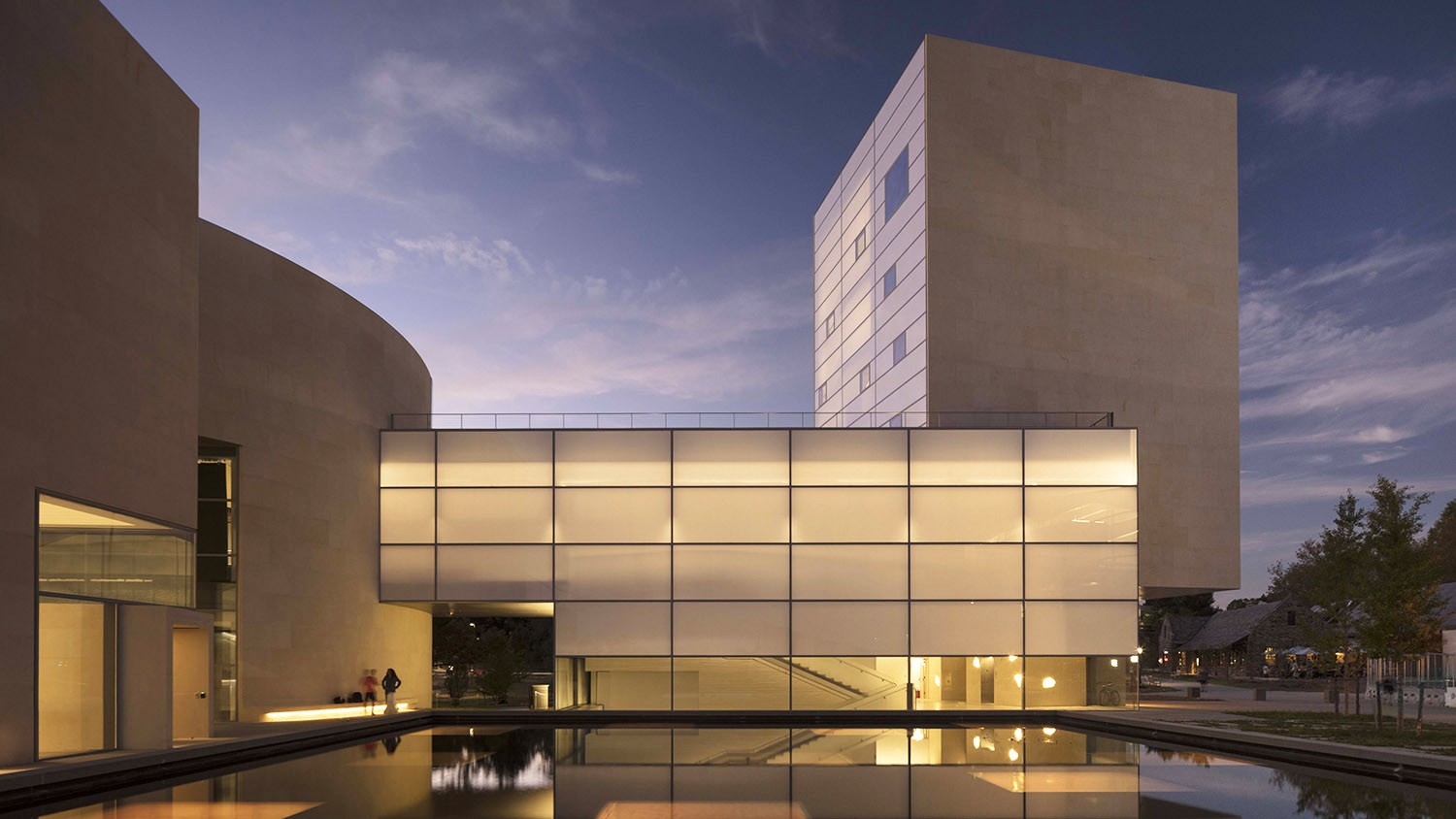
 Lewis Arts Complex
Lewis Arts Complex 


